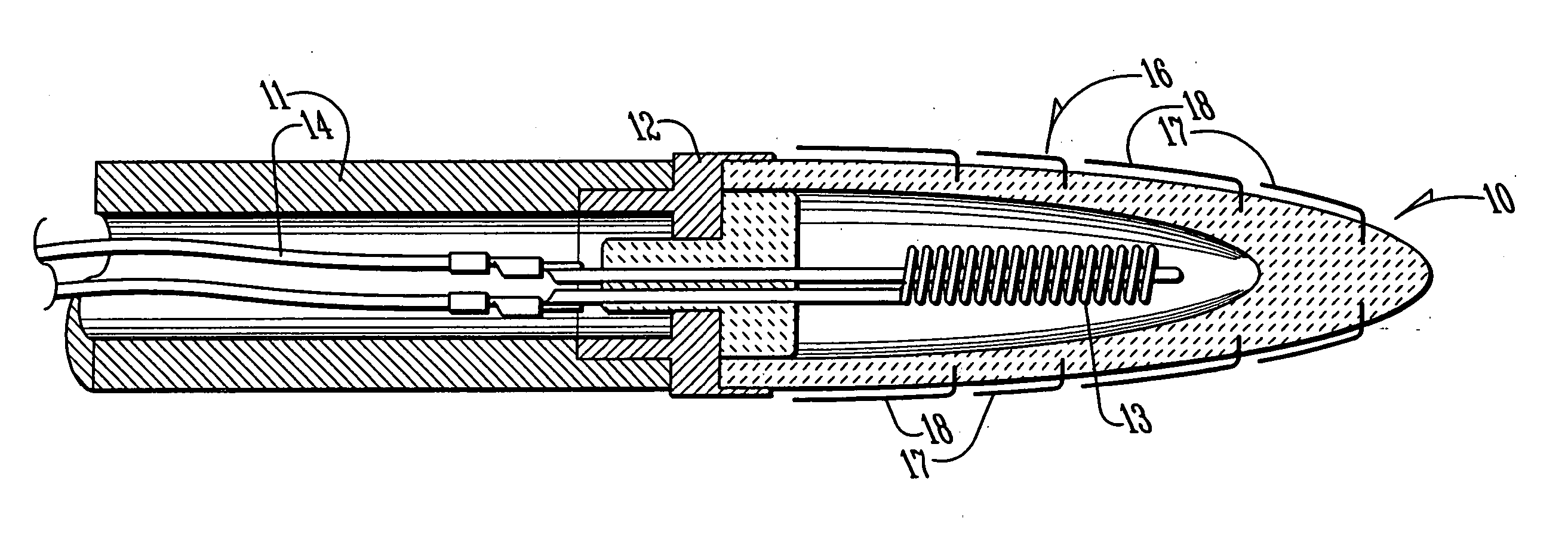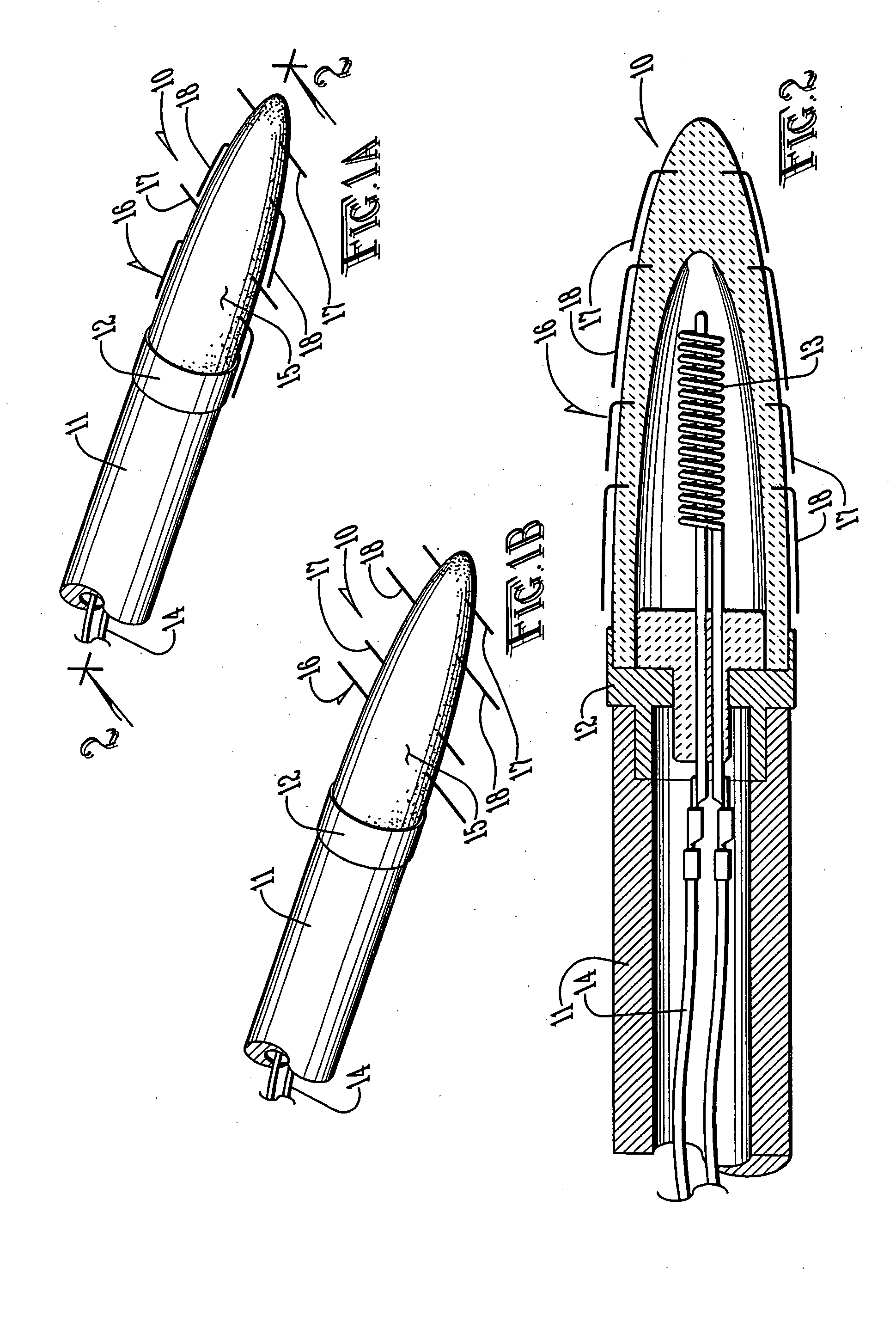Conductive interstitial thermal therapy device
a thermal therapy device and interstitial technology, applied in the field of body tissues treatment methods and devices, can solve the problems of inability to treat patients with such implants with rfa, inability to predict or easily control temperature, and interference with implants, so as to achieve high-predictability temperature distribution and easy control of maximum temperature
- Summary
- Abstract
- Description
- Claims
- Application Information
AI Technical Summary
Benefits of technology
Problems solved by technology
Method used
Image
Examples
Embodiment Construction
[0028] With reference to FIGS. 1A-10, the preferred embodiments of the present invention may be described as follows.
[0029] The present invention is a miniature thermal apparatus for the controlled destruction of malignant and benign tumors / lesions. As used herein, the terms tumors and lesions may be used interchangeably to indicate tissue to be thermally treated by the device and method of the present invention. The present invention comprises a tip 10 mounted onto a fiber 11 that can be inserted through a catheter that has been accurately placed within the tumor / lesion. The tumor / lesion is destroyed via heat generation originating from the specifically designed tip 10 that matches the tumor / lesion geometry. The tip 10 comprises a plurality of deployable thermal conductive elements that may be customized by the number, size and arrangement to be deployable into a geometry that matches the geometry of the tumor / lesion to be thermally treated. The temperature distribution around the...
PUM
| Property | Measurement | Unit |
|---|---|---|
| temperature | aaaaa | aaaaa |
| temperatures | aaaaa | aaaaa |
| transmission | aaaaa | aaaaa |
Abstract
Description
Claims
Application Information
 Login to View More
Login to View More - R&D
- Intellectual Property
- Life Sciences
- Materials
- Tech Scout
- Unparalleled Data Quality
- Higher Quality Content
- 60% Fewer Hallucinations
Browse by: Latest US Patents, China's latest patents, Technical Efficacy Thesaurus, Application Domain, Technology Topic, Popular Technical Reports.
© 2025 PatSnap. All rights reserved.Legal|Privacy policy|Modern Slavery Act Transparency Statement|Sitemap|About US| Contact US: help@patsnap.com



